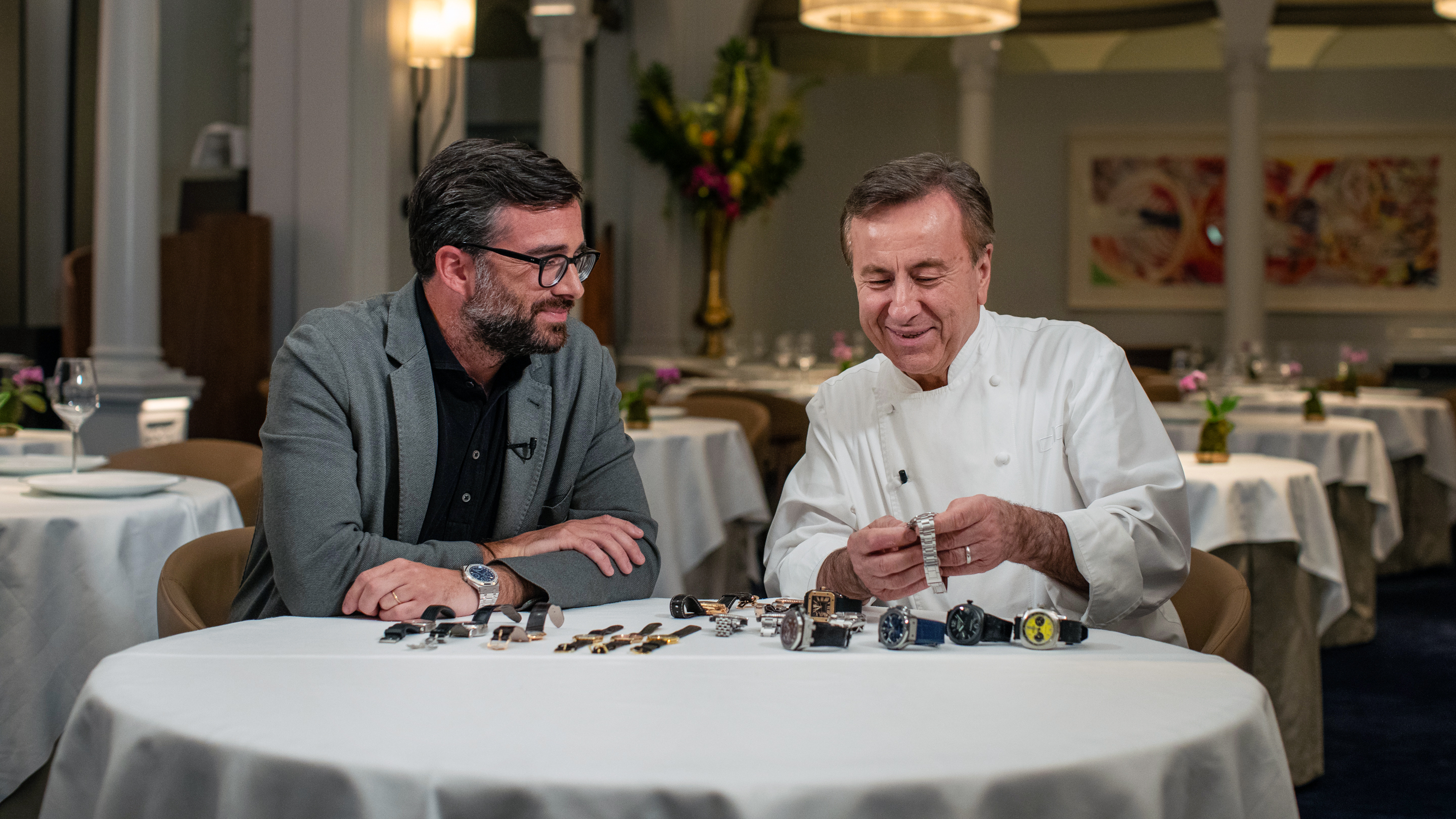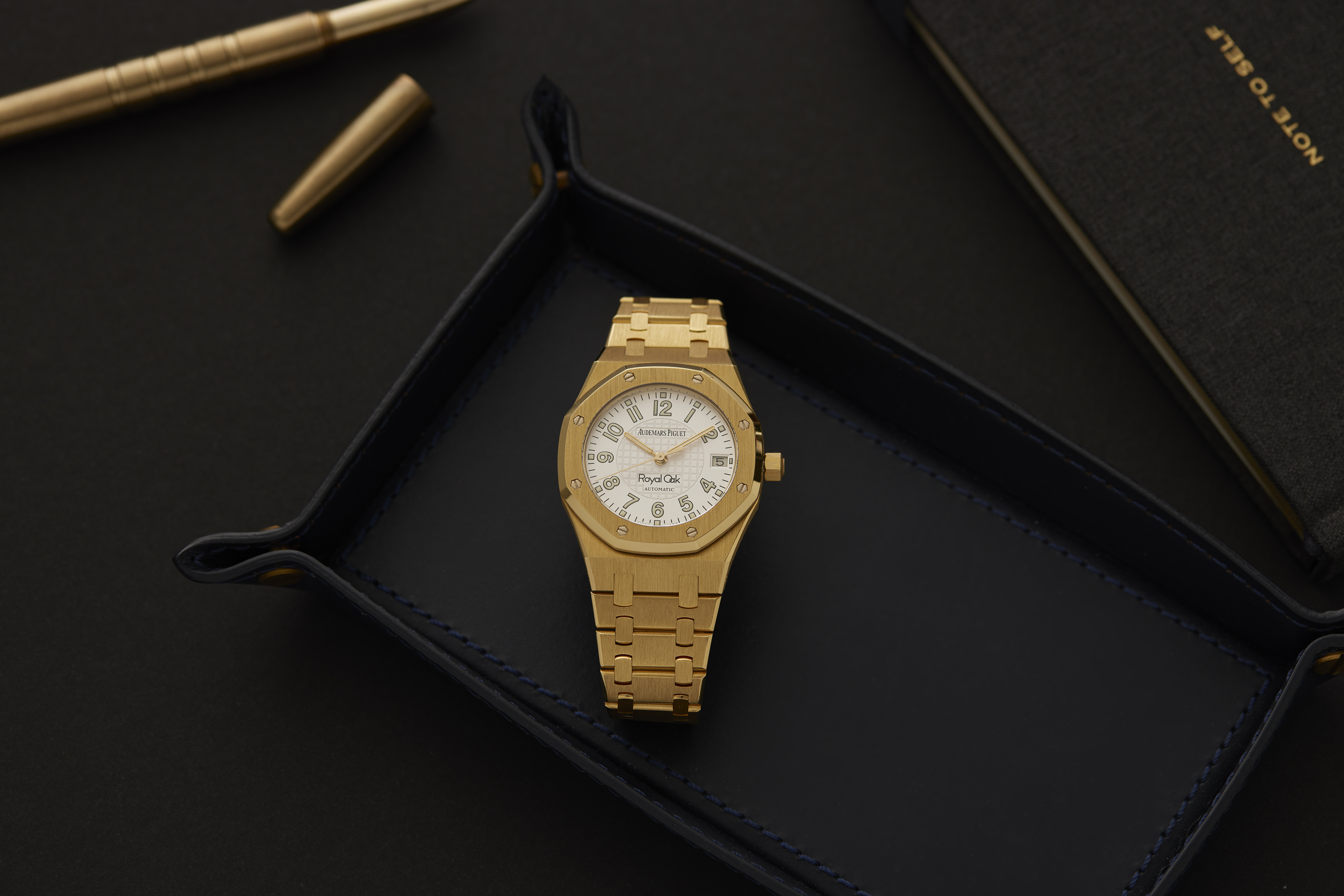ADVERTISEMENT

ADVERTISEMENT
This post is part of a series, Reading Time at HSNY, written by HSNY's librarian, Miranda Marraccini.
Will you be watching the Olympic Games and the Paralympic Games starting in Paris next month? I've always been an Olympics super-fan, though I'm not sure why. Something about the international display of camaraderie, or perhaps the way the games inspire rabid excitement about sports most people don't pay any attention to in the intervening two years–curling, trampolining, handball, and more. I've often found myself standing up in front of the screen at home, fists clenched, screaming as if my life depended on the outcome of a canoe slalom race.
I'm getting to the horology part. The outcome of many sports competitions depends on timing. How do we know who was the fastest, especially in cases where not everyone is competing at the same time, or when the outcome is very, very close? In ancient Greece, where the Olympics originated, timing was imprecise, at best, and relied on sundials and water clocks, as well as the movements of the stars. Thus, most ancient Olympic races, whether in a chariot or on foot, were simply decided by carefully watching the finish line.
With the initiation of the modern Olympic Games in 1896 in Athens, so began the implementation of precise timekeeping at the Olympics. Technicians used stopwatches to time events, notably the Heuer Mikrograph, invented in 1916. As this "Europa Star" article reports, watch companies understood early in the 20th century that being associated with the Olympics brought prestige, and a reputation for precision, to the brand. They began to use Olympic sports in their marketing campaigns.
Image 1.
Sometimes, even with close observance and stopwatches, it was impossible to tell who crossed the finish line first. So Olympic timekeepers incorporated cameras capable of making that determination where the human eye failed – after they developed the film, of course. In 1932, the "photo finish" was born.
According to a Popular Science article from 1933, the system consisted of three parts: a starting pistol, a motion picture camera recording 128 frames per second, and an electric tuning fork clock. The camera recorded contestants finishing and, simultaneously, the elapsed time on the clock to the hundredth of a second. In image 1, you can see an example of a photo finish output in 1932; in image 2, a 1980s version that uses a quartz clock. The finish time is recorded when the runner's torso crosses the line. Both of these images are from a book called "Coliseum '32-'84," discussed below.
Image 2.
For the next several months, in our library at the Horological Society of New York (HSNY), we'll be hosting a triumph of Olympic timing, the Seiko "Olympic Timer" stopwatch. As the name implies, Seiko developed this watch for the Tokyo Olympics in 1964. From the moment Japan was chosen to host the Games, Seiko was campaigning for the role of official timer, which necessitated some innovation from the company.
Seiko used a heart-shaped cam for the start and stop mechanism in its new "Olympic Timer," which reduced mechanical errors and improved precision so that the deviation would not exceed a tenth of a second after hours of repeated use. Ultimately, Seiko succeeded in their attempt to time the Tokyo Olympics, providing 1,278 timing instruments and 172 staff members to support the Games, enhancing the company's international reputation.
Building on the aura of the Games, Seiko continued using the model name "Olympic Timer" for stopwatches manufactured after the Olympics, including the two currently on display at HSNY, made in 1965 and 1967. Image 3, the 1965 monopusher, indicates time to the tenth of a second on the main dial and times 15-minute intervals on the sub-dial. The 1967 model (images 4 and 5) adds a second pusher to separate start/stop and reset functions. Both are part of a new exhibit, "The Evolution of Seiko and Grand Seiko," now on display until December 2024.
Image 3. Photo: Atom Moore
Image 4. Photo: Atom Moore
Image 5. Photo: Atom Moore
While Seiko has timed several Olympic Games, most recently in 2002 in Salt Lake City, it has mostly been Swiss companies including Longines and Heuer (now TAG Heuer) who have filled the role. Omega has been the brand most closely associated with Olympic timing since it provided 30 pocket watch chronographs for the 1932 Los Angeles Games; Omega will be timing the Games in Paris next month, its 31st time in the role of Official Timekeeper. Its photo finish camera can record 10,000 images per second at the finish line – no darkroom required!
A related Olympic curiosity in our collection is a book called "Coliseum '32-'84: Ars et Scientia temporis mensurae" (the Latin, included presumably for fanciness, translates to "the art and science of time measurement"). The Coliseum in question is the Los Angeles Memorial Coliseum, which hosted the Olympic Games in 1932 and 1984. And with the return of the Olympics to Los Angeles in 2028, it will be the first stadium to host the Olympics three times.
I call it a curiosity because the book, printed in three columns in French, English, and German, is full of interesting, grandiose passages like: "Sports and timing, especially in Olympics, are natural partners, since both were born on the slopes of Mount Olympus–thus the world's elite of Olympic and international sports are judged in the most impartial manner possible: by Cronus–the God of Time himself." The book tries to evoke the imagined classical splendor of the ancient Olympics, while illustrating modern advances in precision timing in detail.
Image 6 shows a spread from the book depicting the Lemania 1130, a 24-ligne movement used in the Omega chronographs that timed the 1932 Olympics. The book also covers other equipment like starting pistols and blocks, which are part of a false-start prevention system that can disqualify an athlete who begins before the gun fires (or in modern races, before the electronic signal).
Image 6.
Image 7 gives a sense of the range of timing devices and personnel deployed at the 1984 Games. In the smaller images, you can spot video cameras, still cameras, computers, and technicians. The text explains that the timing devices comprised 12 tons of material and were valued at 2.3 million francs.
Image 7.
If you're looking at the equipment and thinking it looks antiquated, you're right. Even since 1984, we've come a long way. In 2012 the Omega "Quantum Timer" made timekeeping precise to the millionth of a second! In researching this article, I found there was a lot more about Olympic timing still to learn, so I've added two books to the collection that I hope you'll ask for if you visit the library: an Omega book titled Great Olympic Moments in Time and a humorous memoir called Splitting the Second: My Wacky Business in Olympic and Sports Timing, by Alex Cheng.
So when you're watching Katie Ledecky hit the wall at the end of the 800 meter freestyle, wondering how on earth anyone can tell if she won the gold medal, think about the generations of timing improvements that have made it possible to really know (the touchpad used in the swimming pool was first deployed in the 1968 Games). It could all come down to a hundredth of a second or less. That's what makes the challenge and the exhilaration of sports timing – a half breath, an outstretched arm, a final push into the history of human effort.









































Top Discussions
The Sports Section How Omega Captured The Men's 100m Final Photo Finish (And The Watch Noah Lyles Wore While Winning)
A Theory On The Possible Origins Of Brad Pitt's Mysterious 'F1' IWC Ingenieur
Four + One West Hollywood Dealer Ken Jacobs On Embracing Vintage Style For 40-Plus Years